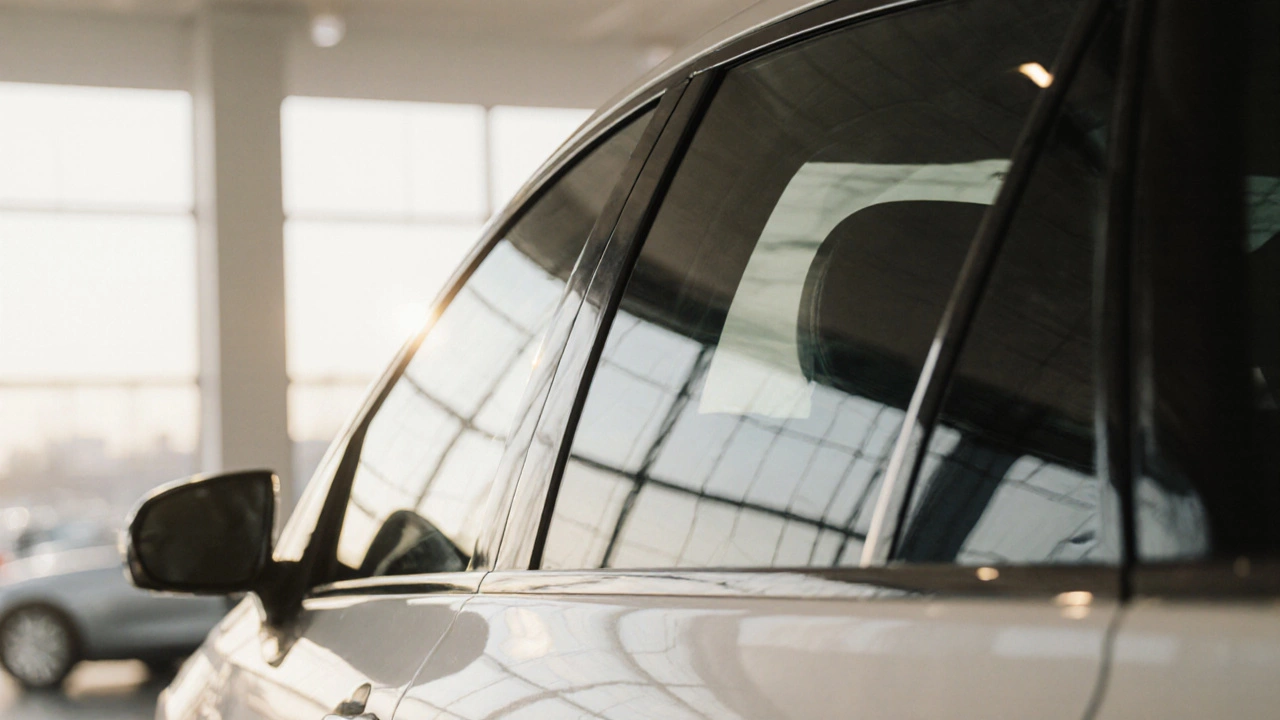When talking about VLT, the percentage of visible light that passes through a car window. Also known as Visible Light Transmission, VLT is the core metric that determines how dark a window tint, a thin film applied to vehicle glass to reduce glare and increase privacy appears. Every state or country sets tint laws, rules that define the minimum VLT allowed on each windshield and side window, so knowing your VLT helps you stay legal while getting the look you want. In short, VLT governs how much light enters, which directly affects car privacy, the ability of occupants to stay hidden from prying eyes and even interior temperature.
First, VLT is a safety factor. A low VLT (darker tint) can reduce glare from the sun or headlights, making long drives less tiring. At the same time, if the VLT drops below legal limits, you risk tickets, failed inspections, and even a revoked registration. Second, VLT ties straight into privacy. A 15% VLT means only 15% of outside light reaches the cabin, which blocks most on‑lookers but can also make the interior feel cramped if you’re not used to it. Third, VLT influences heat. Higher VLT values let more sunlight in, raising cabin temperature; lower values keep the car cooler, cutting AC usage. All three points—safety, privacy, and climate control—show why VLT is more than a number; it’s a practical decision point for any car owner.
Choosing the right tint starts with measuring the existing VLT. Most auto shops use a handheld photometer that gives an instant reading; DIY kits are also available but can be spotty. Once you know the baseline, compare it to the legal chart for your region—Australia, for instance, caps front windshield tint at 70% VLT, while some US states allow as low as 5% on rear windows. After you’ve verified compliance, think about the intended use: daily commutes benefit from a mid‑range 35‑45% VLT for a balance of glare reduction and visibility, whereas show cars might opt for 15% for maximum aesthetic impact. Finally, consider the film type—ceramic, carbon, or metallic—each brings its own trade‑offs in durability, signal interference, and cost.
Below you’ll find a curated set of articles that dive deeper into VLT‑related topics. From legal guides on 15% tint visibility to step‑by‑step instructions on measuring and installing tint, the collection covers everything you need to make an informed choice and avoid costly mistakes. Keep reading to see real‑world examples, expert tips, and the latest updates on tint regulations.

Learn how dark factory window tint really is, its VLT range, legal limits in Australia, and when to consider aftermarket upgrades.